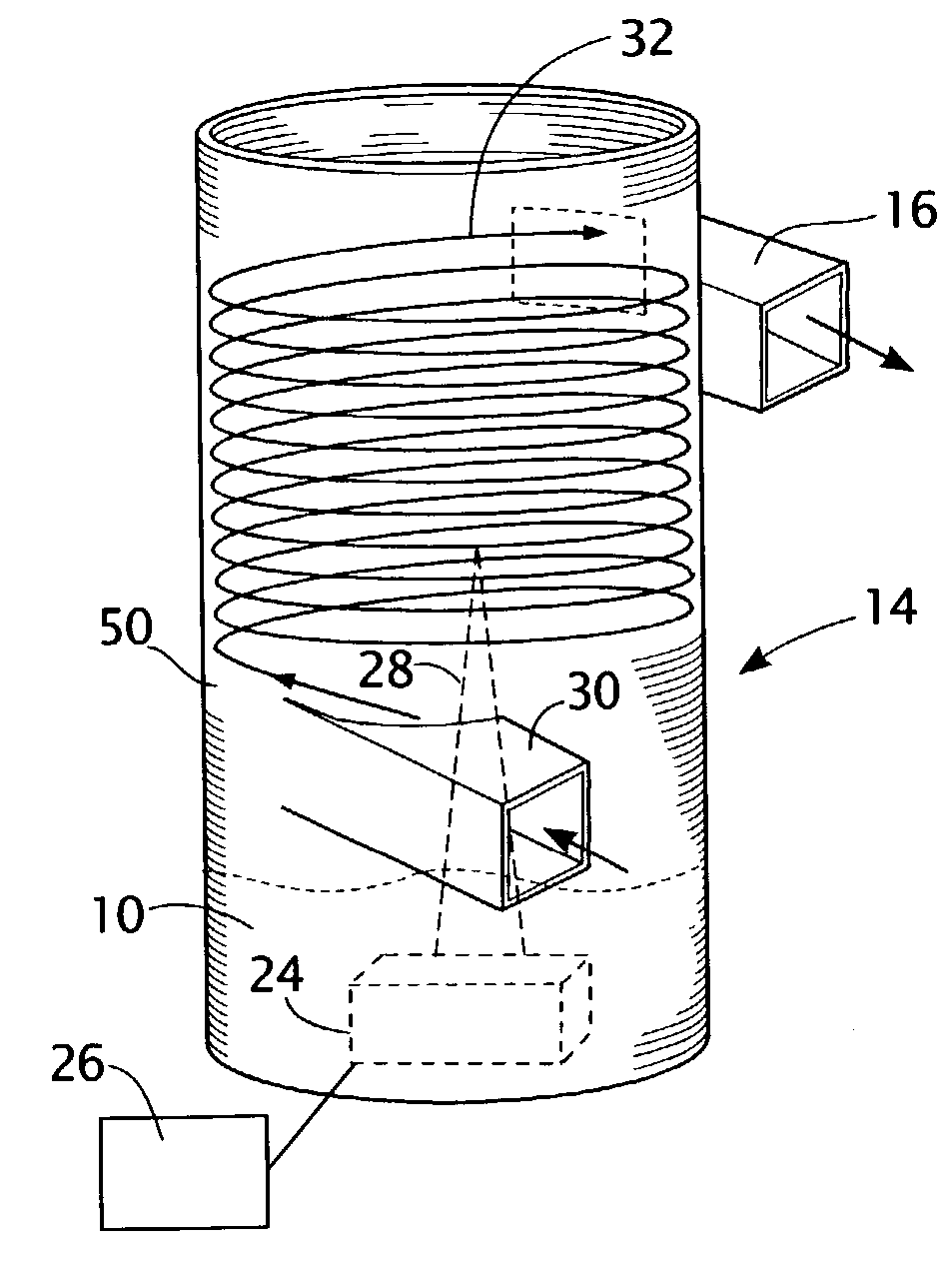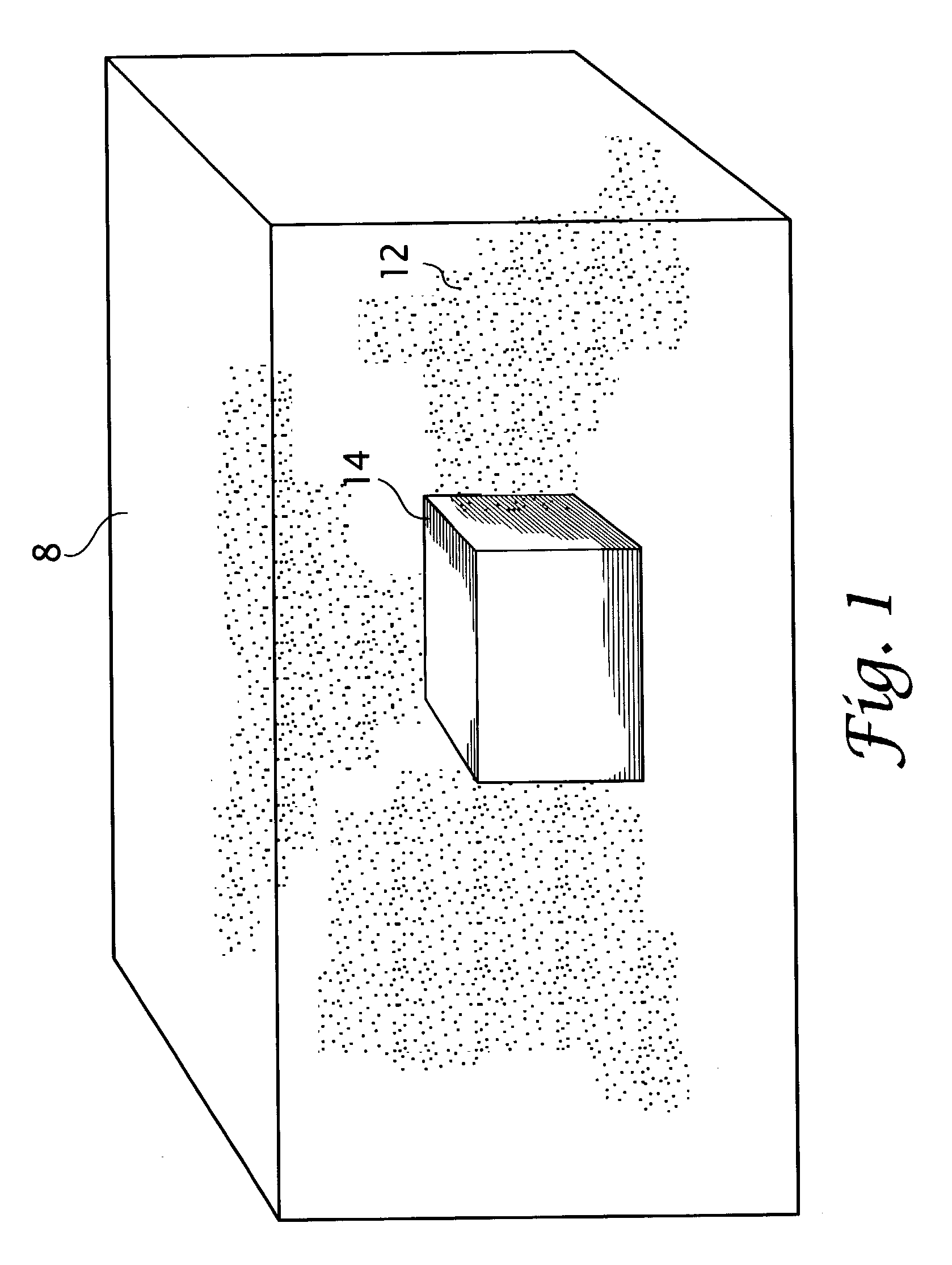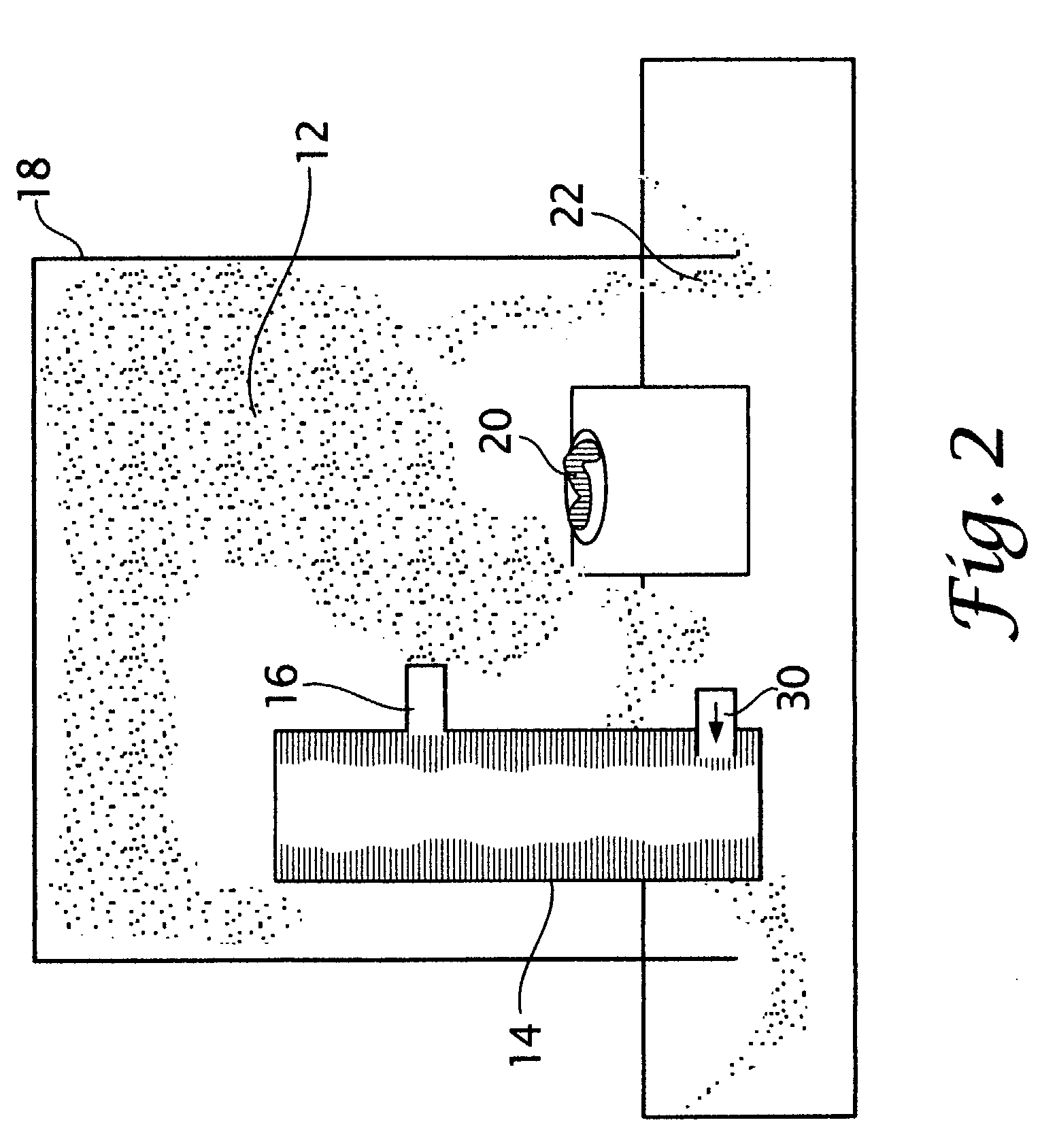Apparatus and method for fine mist sterilization or sanitation using a biocide
a biocide and apparatus technology, applied in the direction of atomized substances, lavatory sanitizers, disinfection, etc., can solve the problems of hydrogen peroxide, high cost of prior method of using chlorine dioxide gas, specific danger of anthrax, etc., to improve the throughput of mist, enhance the stability of mist, and reduce the effect of momentum
- Summary
- Abstract
- Description
- Claims
- Application Information
AI Technical Summary
Benefits of technology
Problems solved by technology
Method used
Image
Examples
Embodiment Construction
[0027]The present invention uses an aqueous biocide solution 10 comprised of a biocide agent and solvent, particularly hydrogen peroxide solution, to generate a mist for application in sterilizing an environment. An example of an embodiment of the invention is shown in FIG. 1 in which a mist 12 is generated from a device 14 for sterilizing an enclosed environment 8, such as a room or building. The hydrogen peroxide is stabilized in low concentrations such as in solutions containing 3% by weight hydrogen peroxide in water. The actual concentration of hydrogen peroxide in the solution does not have to be 3% wt in water, but may be more or less depending upon the desired concentration of the solution. In fact, an advantage of the present invention is that enhanced reactivity promotes the conservation of hydrogen peroxide consumed during application. In general, the combination of the variables of concentration of solution and time of exposure will provide a formula for determining the ...
PUM
| Property | Measurement | Unit |
|---|---|---|
| droplet diameter | aaaaa | aaaaa |
| droplet diameter | aaaaa | aaaaa |
| diameter | aaaaa | aaaaa |
Abstract
Description
Claims
Application Information
 Login to View More
Login to View More - R&D
- Intellectual Property
- Life Sciences
- Materials
- Tech Scout
- Unparalleled Data Quality
- Higher Quality Content
- 60% Fewer Hallucinations
Browse by: Latest US Patents, China's latest patents, Technical Efficacy Thesaurus, Application Domain, Technology Topic, Popular Technical Reports.
© 2025 PatSnap. All rights reserved.Legal|Privacy policy|Modern Slavery Act Transparency Statement|Sitemap|About US| Contact US: help@patsnap.com



